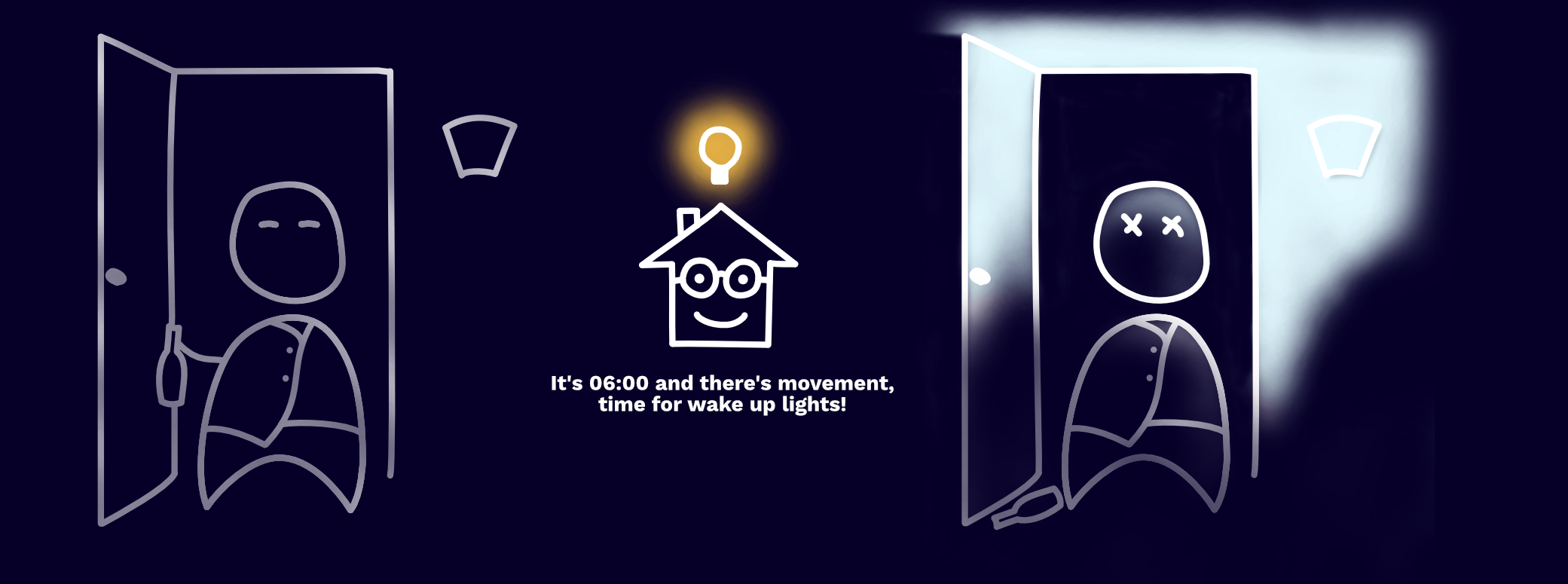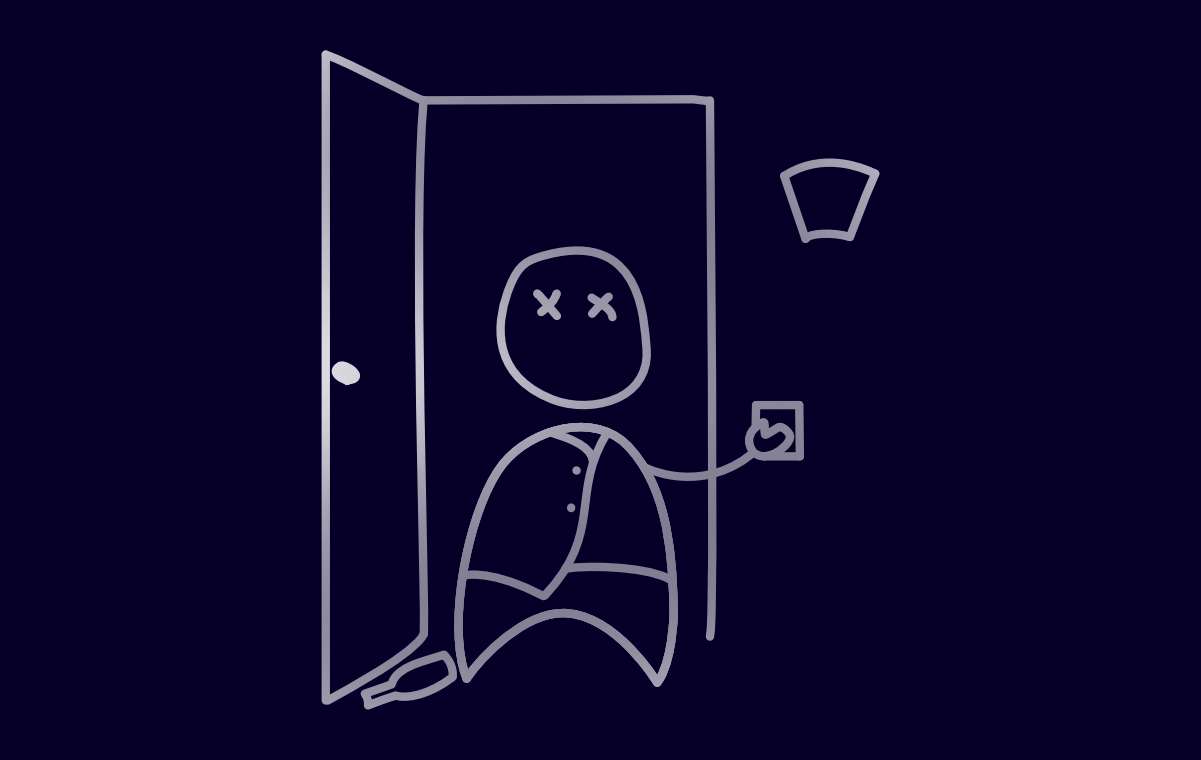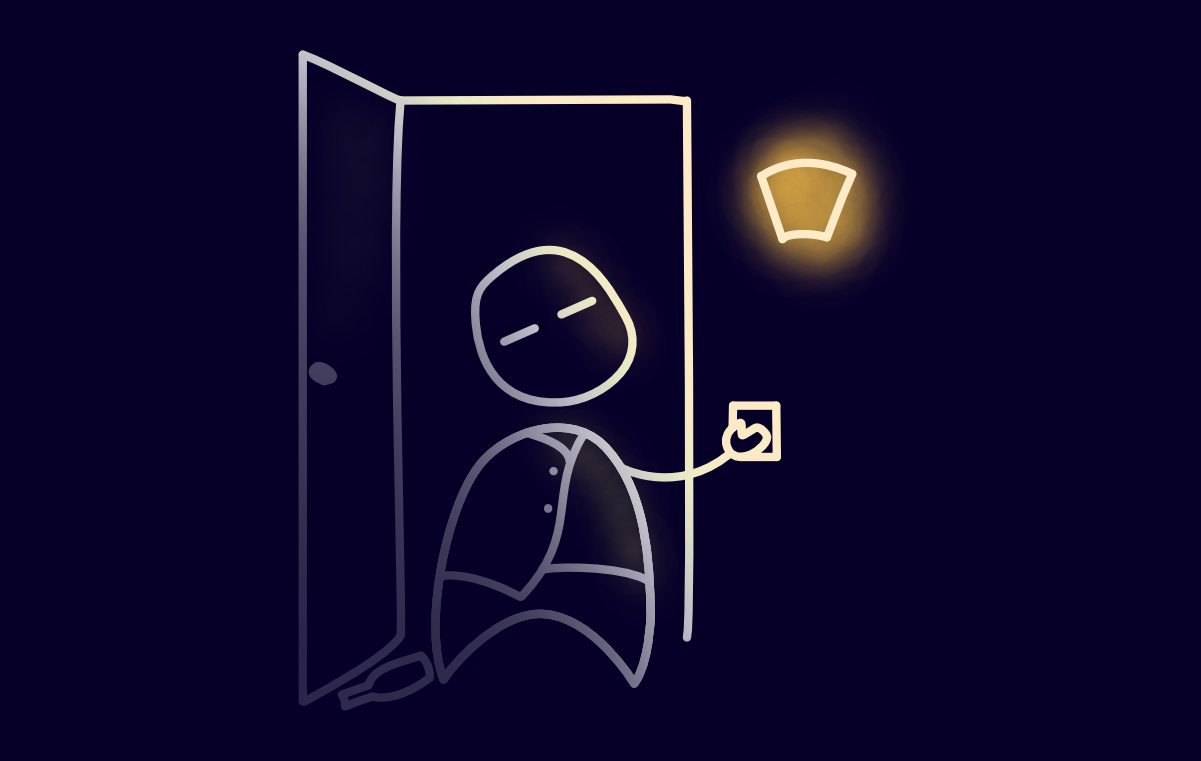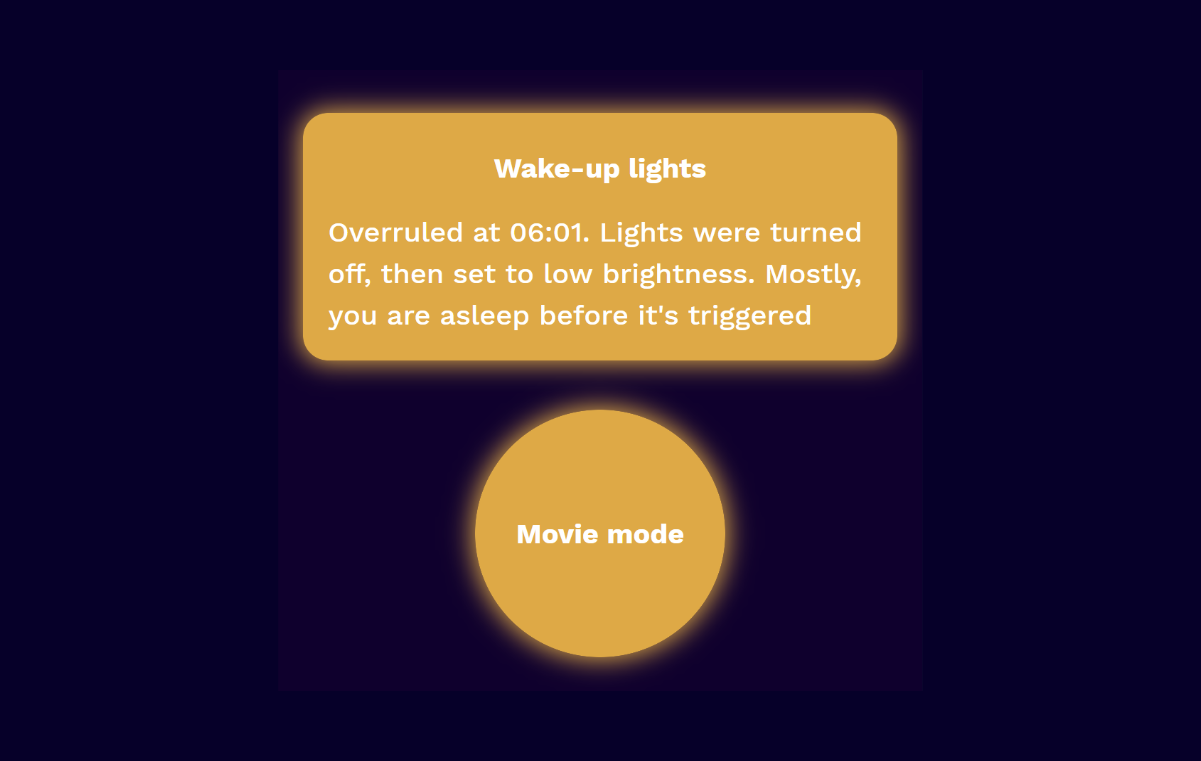Slimmer dimmer: a case of inclusive smart home design
With the Internet of Things, smart home enthusiasts have access to a lot more products to build their smart home. However, enthusiasts are rarely the sole inhabitants and their co-habitants are not likely to share the same level of enthusiasm for new technologies.
During my graduation, I explored how the enthusiast smart home might provide a pleasurable experience for all inhabitants. This page is a summary of my findings and designs, but references to more depth are scattered throughout.
Design scenario
The original design goal was rather broad and by gathering information from the context, a narrowly scoped goal could be defined:
“Provide lighting control that a non-enthusiast is familiar with while supporting an enthusiast in the continuous development of their DIY smart home.”
To make this goal tangible for designing, it was turned into the following design scenario:
1. A non-enthusiast is reading with the light turned up.
2. At 22:00 the house goes in evening mode and the light dims.
3. The non-enthusiast can’t continue reading.
Principles for inclusive smart home design
From the analysis and testing done during this project, three main design principles could be identified. They are insights that are not specifically applicable to the design goals nor to the product that was designed. They are general principles that can be used as guidelines to design more inclusive smart home products. These guidelines are introduced using the wake-up light scenario.

1. Enthusiast comes home after a party ready for bed, it’s very late.
2. The house thinks they just woke up and gives them the floodlights!
3. The enthusiast has burning eyes.
Protect domestication
Domestication of technology is the process with which people hear about a technology, learn to use it and integrate it into their routines. This first principle calls to protect any domesticated technologies that smart products might affect. A smart product that is introduced should keep the original routines intact. For this, the traditional control must stay; lights can be controlled with a light switch, the TV can be controlled with a remote, indoor climate can be controlled with a thermostat and a door can be physically locked.

The lights were full brightness, so you smacked the switch next to the door. Lights are off, just like always.
Give immediate control
Households are socially complex and routinely involve breakdowns, improvisations, compromises and conflicts (Davidoff et al., 2006). We are unpredictable, sometimes we’re sick or get home a bit late. This second principle calls to abandon automatic behavior once an exception is found. When a user tries to deal with an exception, they should immediately receive full control. Non-enthusiasts expect to receive full control when manually controlling their environments. When they turn the lights on, the lights are staying on.
After smacking the lights off, you turn them on very dimly. They stay like this until you turn them off again.

Facilitate adaption
People are unpredictable, but this does not mean exceptions are impossible to solve. When a user deals with an exception, it can be used to learn from. By keeping track of these moments with immediate control, useful insights can be gained. Knowing if an exception happens often, with whom they happen, when they happen and what exactly happens are crucial pieces of information for improvement. Turning this information into actionable insights and making it accessible to the enthusiast, gives them the tools they need to improve an automation.

After sleeping, you check what actually happened during your morning. You know exactly what happened and how to fix it. You decide to only enable wake-up lights after your alarm has gone off.
Presenting slimmer dimmer
The inclusive smart home design principles were not developed in isolation. They come from a specific context with a specific solution. The slimmer dimmer solves the reading light scenario by providing a recognizable lighting control for non-enthusiasts and a hidden depth for enthusiasts.
1. A non-enthusiast is reading with the light turned up.
2. At 22:00 the house goes in evening mode and the light dims.
3. The non-enthusiast has a recognizable control and solves the situation.
Manual and automatic control
The dimmer has two general modes it functions in. When the knob is turned or clicked, it is in manual mode. Manual mode is the first mode any user would encounter and it will disable any smart behavior for lights in the room. To enable these automations again, the button needs to be long pressed.
Warm white is manual mode, blue is automatic mode. Double clicking provides a custom button and quickly fills the ring.
Onboarding and insights
The dimmer comes with a companion app to configure the device. During the onboarding, the enthusiast is taught how to use the device and introduced to the concept of manual/automatic control. Alongside onboarding and configuration, the app provides the enthusiast with insights. See a live demo of this onboarding here (works in google chrome): graduation.emilflach.com/config.
Some steps during the onboarding in chronological order, with insights at the end.

Concluding
With the context, process and results presented, this project can be concluded as successful. The original research goal was to investigate how a smart home may combine the control and flexibility of an open source platform with the convenience of a proprietary service-based system, while inclusively catering to a diverse group of inhabitants.
The project achieved an answer to this goal by using the research through design method. This method provided many moments of validation and reflection, finally resulting in research findings. These research findings were presented in a distilled manner as the following design principles: protect domestication, give immediate control and facilitate adaption. The findings were also presented through a design, the Slimmer Dimmer, which dealt with a specific scenario.